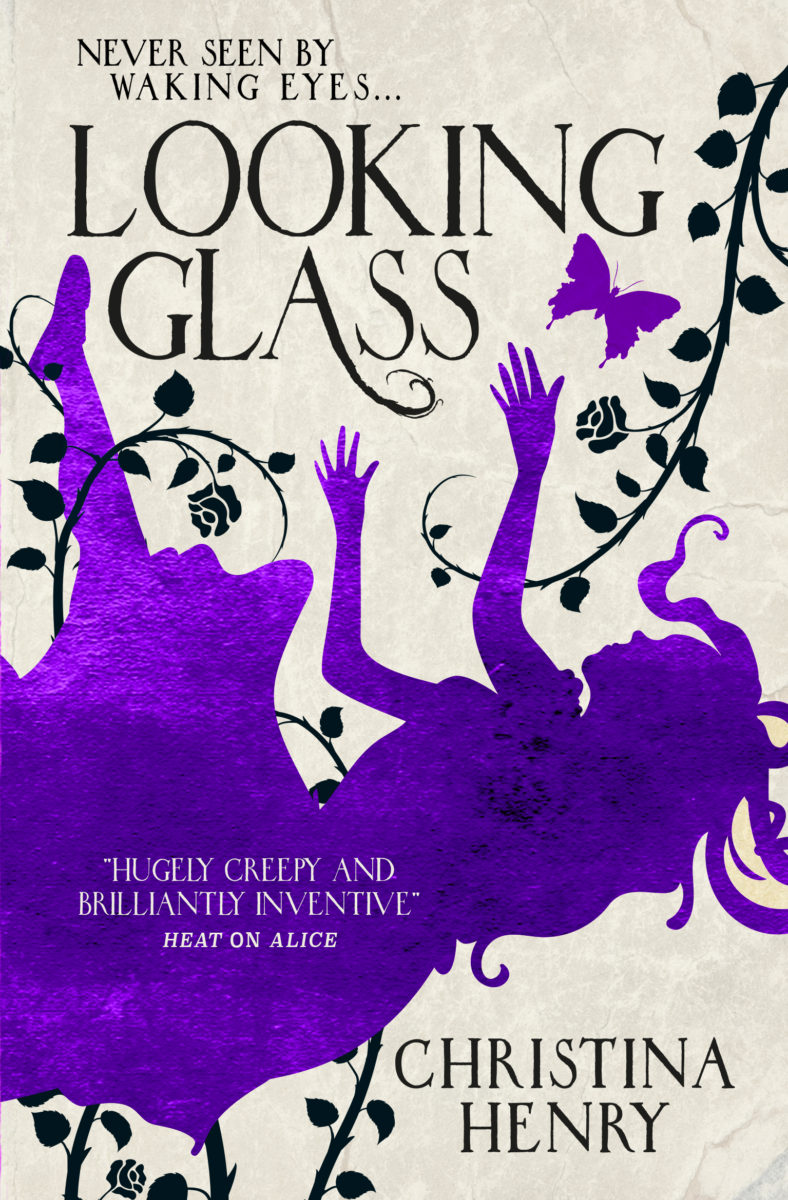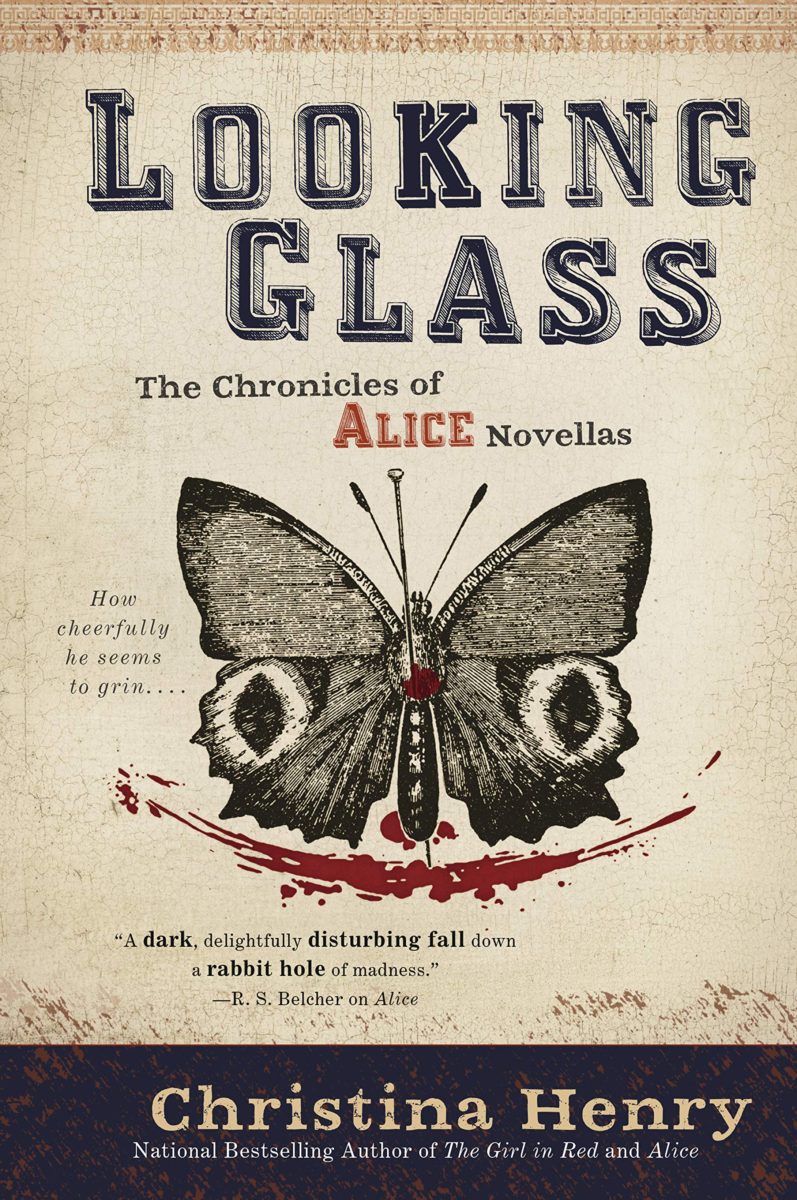I don’t really go in for short story collections and I don’t really like the original Alice or her twee wonderland. But ah, Christina Henry is such a master that I forget all about that when I read her work. These stories are interconnected novelettes, complex and complete unto themselves, but even better when taken as a whole. Darkly magnificent and spellbindingly smart, these four stories make a book that belongs on every shelf and a fitting finale to Alice’s adventures.

Lovely Creature
Elizabeth is a haughty, self-absorbed heroine and I couldn’t love her more. She’s a jumble of willfulness and kindness and selfishness—in other words, she’s a child. A privileged child, to be sure, but still a kid. And although I was a very different type of child, Henry nails what it’s like to be a young girl, desperately curious about all the things adults don’t or won’t say. Elizabeth is even curiouser when her parents mention “Alice” in hushed tones, and curiouser still when she sees a strange figure in the crowds during a city-wide celebration. But when she goes chasing after, it’s not the same story as Lewis or even Henry has told before.
All the stories in Looking Glass still have snippets of the original Alice’s whimsy, especially in the dialogue. But none more so than “Lovely Creature,” in which Elizabeth converses with a mouse and is quite cross with a topsy-turvy world. But these stories are not games. And more than her charm, Elizabeth’s arrogance is critical to her survival. She needs to be in order to believe she can survive, can fight, can flee, even though she’s a child in a world of terrifying adults. Henry doesn’t punish her heedless confidence, only tempers it with a little wisdom and a little sorrow.
I desperately want to see more of Elizabeth in future works and hope that she’ll make another appearance soon.
Girl in Amber
This is Henry trying her hand at a haunted house story, although it turns out to be more of a hunting house. The entities in the house stalk her and the very walls seem to breathe down her neck. It’s a brilliantly tense take on the genre, because it’s actually a bit more like Alien than a strict haunted house story. The entities are straightforward rather than psychologically menacing, and the house itself is dangerous, much like the fragile walls and systems of a spaceship. Outside is a deadly cold, although in Alice’s case it’s a snowstorm instead of the void between the stars.
The suspense ratchets up to 11 very quickly and stays tense as a tripwire as Alice navigates a house full of monsters as well as a twisted inner landscape of fear and doubt. She still doesn’t fully understand her own magic and she still hasn’t been able to fully encompass her own trauma. Fighting on two fronts, the internal and the external, is more than doubly hard, but our heroine is up to the task. Mostly because she must be.
This story more fully examines the idea of saving oneself. Oh sure, it might be very noble and feminist for a lady to rescue herself, but it is also terrifying and exhausting and No Fun At All. This book says quite clearly that it’s okay to need people, and to need help, or even just to want it. Even if you don’t get it, the needing and the wanting is okay. We are human and we are not meant to be so powerful that we’re invulnerable (that way lies tyranny) or so aloof that we do not wish for help (that way lies madness). In fact, it’s Alice’s desire not to be alone that might be her greatest help and strength in this house of horrors.

When I First Came to Town
If “Girl in Amber” is Horror or Sci-Fi, then “When I First Came to Town” is classic Action. It’s Rocky with magic. Not just because it’s about boxing, but because it’s cinematic, iconic. The tension is ever more taut and breathless. It digs into that deep myth of the underdog and draws out all the things we love to believe, that goodness and cleverness will beat brute force, that the downtrodden can rise up through hard work and passion, and that everyone gets what’s coming to them in the end.
This is Henry, though, so it’s not quite that simple. There are tragedies that can’t be entirely undone by victory or defeat, and there are compromises to be made. But this story encapsulates one of Henry’s overarching themes: that you must try, that it is worth trying, and that ferocious will is the match of any evil.
The Mercy Seat
The difference between good horror (or mystery) and great horror (or mystery) is that great horror doesn’t require your ignorance. You can know exactly, or almost exactly, what’s coming and still be on the edge of your seat.
This is great horror. (Or mystery.)
Henry makes no bones about what’s coming to get Alice and Hatcher. They know there’s something bad, and that it’s unavoidable, and then they only learn more about it before they actually face it. And then it’s still bad.
Bad but brief. The tale ends a little too quickly given all the buildup and dread, even though it’s a satisfying ending. I don’t love the end to Wilhelmina’s story, since it also serves as the capstone of Alice’s journey with magic. It may be literarily fitting both to hoist someone on their own petard, and also emotionally fitting for Alice to use others’ abusive power against them rather than constantly digging into her own trauma to find enough fury to get the job done. And it’s certainly horrific in the particular way Henry is so excellent at conjuring up. But I wish it had come with a bit more reflection on these things.
That being said, I do love the end of Alice and Hatcher’s journey, both emotional and physical. Their road has been very long and they have more than earned the place where they come to rest. This last story again takes up both the inner and the outer battles, only this time Alice isn’t battling her own flaws but the mistakes others made that affected her.
No one really tells you how ugly and hard the road to forgiveness is. It’s supposed to be a beautiful thing and a final thing too, one-and-done. But as with saving yourself, forgiveness is hard and often ugly, and a much longer journey than it ought to be. If “Girl in Amber” was about self-forgiveness, then this is about the forgiveness of others, especially mothers, and especially Alice’s mother.
Alice’s mother brackets the book, first in “Lovely Creature” and then here in “The Mercy Seat,” and we see both her grief and her inaction. How can we not be angry with her? How can we also not pity her? She’s a girl in amber just as much as any of her daughters, only she’s been trapped forever. And if Alice doesn’t also want to be trapped in her resentment, she has to hold on to the thorny complications of their relationship rather than dismissing or embracing the memories of her mother. Parents aren’t perfect, and as Alice stands on the precipice of parenthood herself, she has to contemplate the terror of failing someone in her care, which is worse than failing to save herself. Forgiveness sprouts in this vulnerability rather than from her strength, and it’s here that Henry’s emotional insights really shine.
All the stories taken together are a wonderful, awe-full return to the dark wonderland of Christina Henry’s imagination. They terrify and surprise, delight and deepen, and collectively make a fitting finale for Alice, one of my favorite heroines of recent memory.
